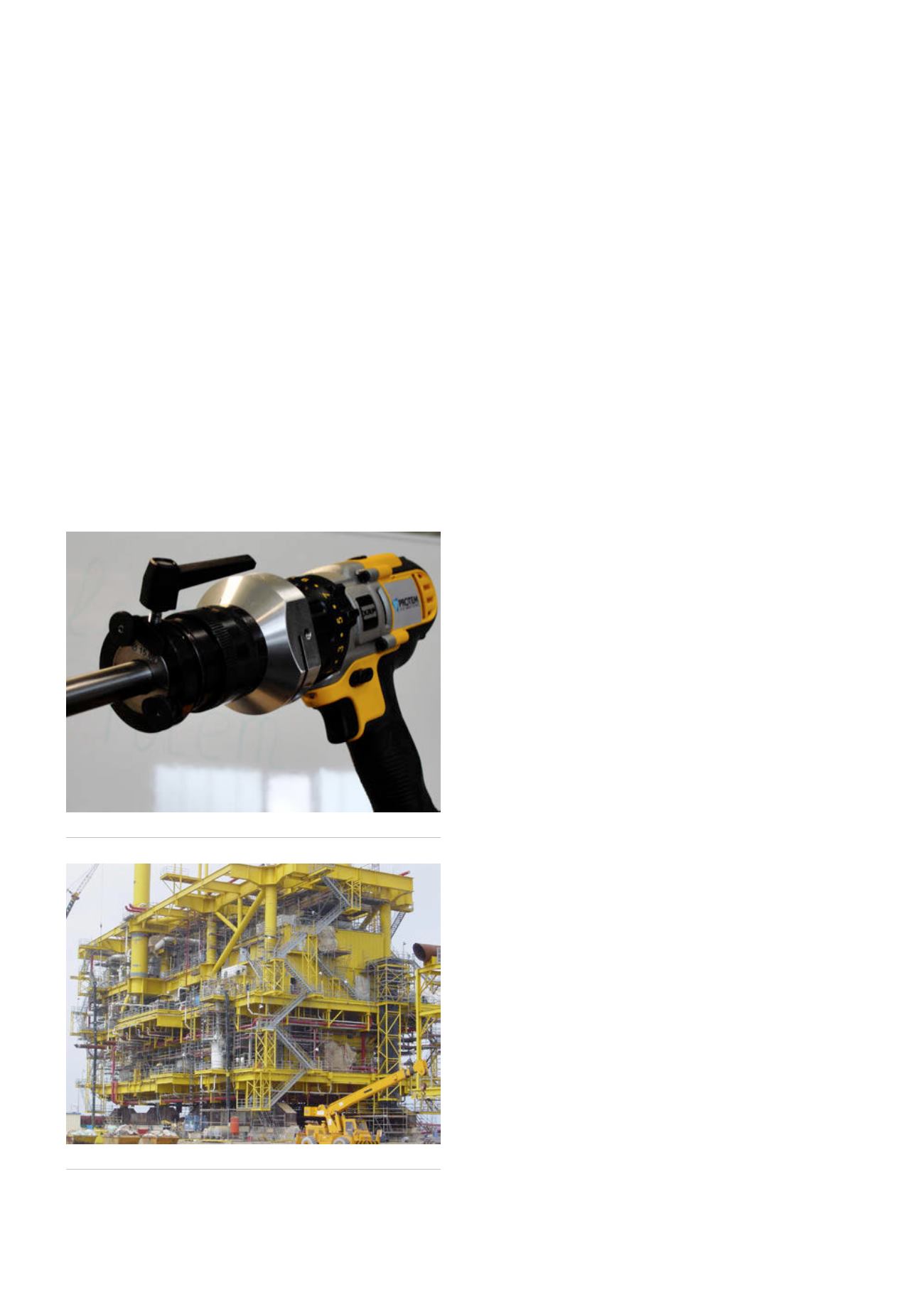
bevel angles to be determined correctly. When the bevel is made
by hand, it cannot be mastered totally accurately. For this reason,
it is better to use suitable apparatus for machining edges, so that
an accurate, constant bevel angle can be obtained.
Cold cracking
Cold cracks appear after welding (immediately, several hours or
even several days later).
This type of defect is caused by a simultaneous combination
of three factors: a temper structure (hard and fragile), residual
mechanical stress (for example related to clamping) and the
presence of diffusible hydrogen in the weld bead. This last
factor may be related to poor preparation of the edges. It must
be remembered that when welding is performed on a rusty or
poorly decreased part, the hydrogen present in the rust or the
hydrocarbons will decompose in the weld. Stresses will then
appear on the atomic scale when the metal is cooling down. If
ever this concentration of stresses becomes too high, the metal
will crack.
When accompanied by other precautions, such as drying
the electrodes in ovens or preheating parts to be welded, dry
machining the joint edges will enable welding on hydrogen-free
material and, in this way, reduce the probability of cold cracking.
Blowholes
Besides causing cold cracking, a poorly prepared surface can
also be the cause of blowholes appearing in the weld. This can
be explained by the fact that the presence of water, rust or
greasy substances on the part will lead to the formation of gas
bubbles liable to be trapped inside the bead. As is the case in cold
cracking, the right type of machining (dry) of the end to be welded
will lead to a significant reduction in the probability of this type of
defect appearing.
Iron contamination
Iron contaminations concerns stainless steels. Whenever this type
of steel finds itself in contact with iron particles and an electricity
conducting medium (for example damp air), a galvanic corrosion
mechanism comes into being. As a result, the passive layer of
stainless steel will deteriorate progressively and risks of pitting are
then liable to occur.
Generally, these iron particles come from using inappropriate
equipment. This may concern:
)
)
Shaping equipment: presses, bending machines, etc.
)
)
Cleaning equipment: metal brushes, cleaning rags that have
been used on carbon steel, etc.
)
)
Machining equipment: cutting and bevelling tools, clamping
jaws, etc.
This type of contamination may also come from grinding
operations carried out on carbon steel in the vicinity of the
stainless steel parts.
In the context of a part that has been machined before
welding, it is primordial that a check is made to ensure that the
clamping jaws and cutting tools used are compatible with stainless
steel machining operations (jaws in stainless steel or light alloy for
example) and that they have not been used for working on carbon
steel beforehand (or that they have been decontaminated since).
Penetration defects
Excess or incomplete penetration
Incomplete penetration is normally characterised by a non-melted
zone at the root of the weld. Excess penetration corresponds to
a surplus of molten metal at the base of the welded joint. These
two defects are caused by poor welding parameters (intensity,
voltage, welding speed) and also by the clearance between the
parts or poorly controlled land thickness.
Too little clearance will give rise to incomplete penetration,
whereas too much clearance is liable to cause excess penetration.
In certain cases, this type of defect is not systematically
eliminated by highly accurate positioning. If the parts to be
welded are not perfectly parallel due to poor preparation,
unequal clearance between the parts will be liable to give rise
to localised points with excess or incomplete welding. Accurate
facing of the ends enables one of the causes of this defect to be
eliminated.
Figure 1.
Protem Tube Squaring Machine SE25
Figure 2.
Protem welding preps.
126
World Pipelines
/
JUNE 2015


